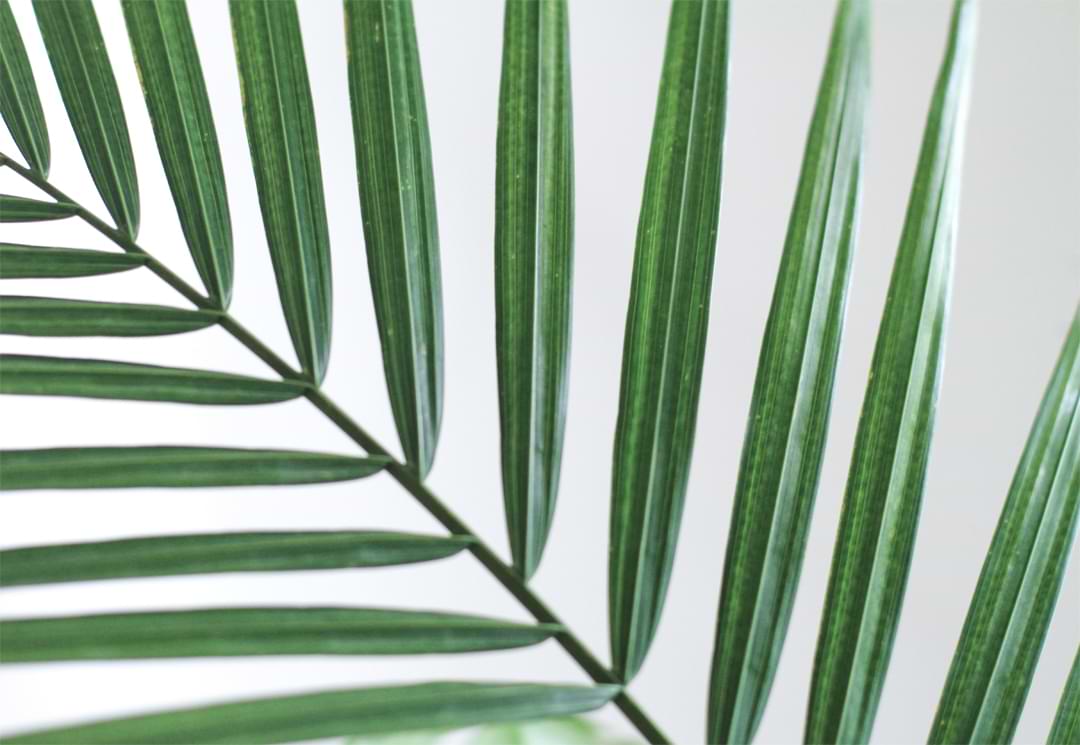Is your majesty palm unhappy? No worries! Here’s how to diagnose and treat the most common majesty palm problems.
Majesty palms are beautiful, easy-to-care-for houseplants that add a laid-back, tropical vibe to any space. While they are easygoing plants, they aren’t immune to problems! It’s important to know which issues to watch out for in your majesty palm and how to recognize and treat them so that you can act quickly if there is a problem.
Here’s a rundown of the most common problems you may run into with your majesty palm and what to do about them!
How to Treat Common Majesty Palm Problems
When a majesty palm is stressed, the most common symptoms you’ll see will be browning or yellowing leaves. This can get confusing because these issues can indicate different problems. But if you learn to recognize where and how the leaves are discoloring, you can pinpoint the problem.
Yellowing lower leaves
If you notice the lower leaves on your palm turning yellow, there’s a good chance that your majesty palm isn’t getting enough light. These plants are native to the tropics of Madagascar, so they need a fair amount of indirect sunlight to be healthy. When they don’t get enough light, they can’t make enough energy, so they conserve energy by directing resources to the newer leaves and letting the older ones yellow and fall off.
If you notice yellowing lower leaves, try moving your palm to an area with a bit more sunlight, but keep them out of direct sunlight, or you might end up scorching the leaves (we’ll talk about leaf scorch in this article too).
Yellowing leaves all over
Leaves can also yellow from inconsistent watering. Don’t let your palm’s soil dry out completely between watering, and water just enough for the pot to start draining. Don’t soak the soil and then let it get bone dry.
Yellowing leaves with brown tips
If the tips of your palm fronds are browning and then turning yellow, your majesty palm might need more humidity and/or a little more water. Make sure you aren’t letting the soil dry out completely between waterings, and you may want to consider adding a humidifier or pebble tray to give your plant some extra humidity.
It’s also a good idea to make sure your plant is far away from drafts or vents that can dry out the leaves.
Brown, crispy leaves
Like many tropical plants, majesty palms like indirect sunlight, which is similar to the conditions they’d get below a rainforest canopy. If your palm gets too much direct sunlight, the leaves will burn! If you notice brown, crispy leaves on your palm fronds, make sure to evaluate your light conditions and adjust if necessary.
Yellowing leaves with brown spots
This pattern can indicate an insect infestation. If you notice tiny brown spots and leaf discoloration, you may have a pest like spider mites or mealybugs. You may also notice a clear, sticky residue or webbing on your leaves and stems.
Regularly check your plant’s leaves and stems for insects. If you find any, remove as many as you can with a pair of tweezers, then hose off your plant with water to remove any stragglers. Finally, spray down your plant with Leaf Armor to protect your palm from further damage from insects, dust, or debris.
Yellowing leaves with no pattern
If your majesty palm has yellowing leaves that don’t fit the description for any of these other problems, you might have a nutrient deficiency. If your majesty palm is lacking nutrients, especially magnesium, you may notice discoloration and slow growth.
Make sure to incorporate a gentle liquid fertilizer into your care routine to provide your majesty palm with all the nutrients it needs. We recommend Indoor Plant Food because it’s perfectly balanced for almost all houseplants (including majesty palms!) and is gentle enough to use with each watering. That way, you don’t have to remember a fertilizing schedule.
If I’ve learned anything about plant care in my many years as a houseplant enthusiast, it’s that consistency and convenience are key!
Now that you know exactly what warning signs to watch for in your majesty palm, you’ll be able to nip potential problems in the bud. For more information about caring for your majesty palm, read our complete guide to majesty palm care here!




